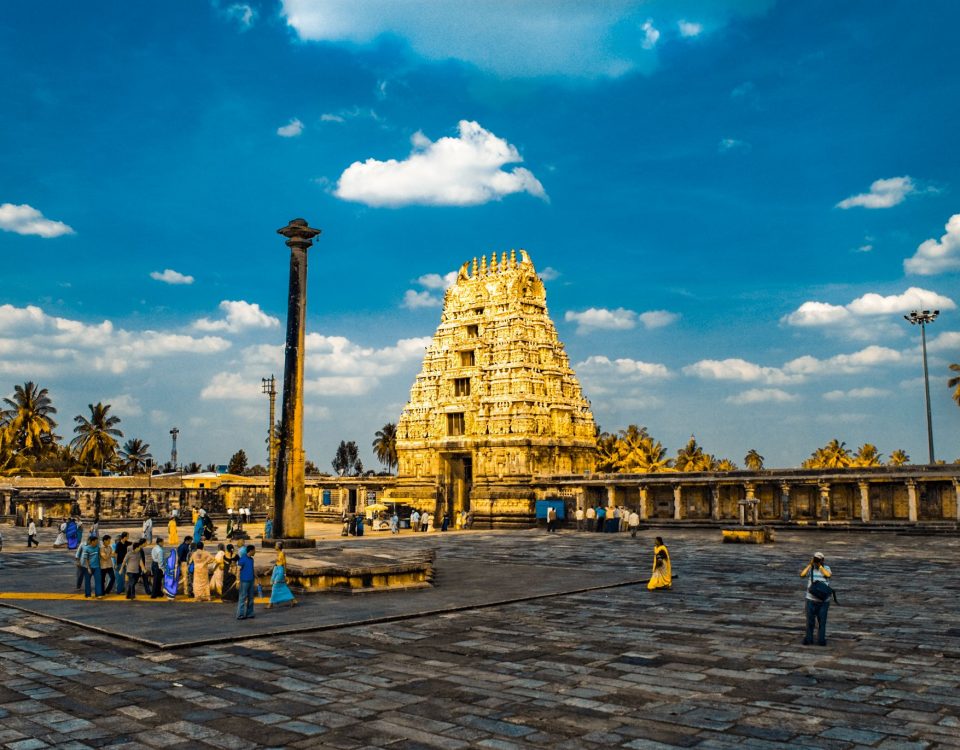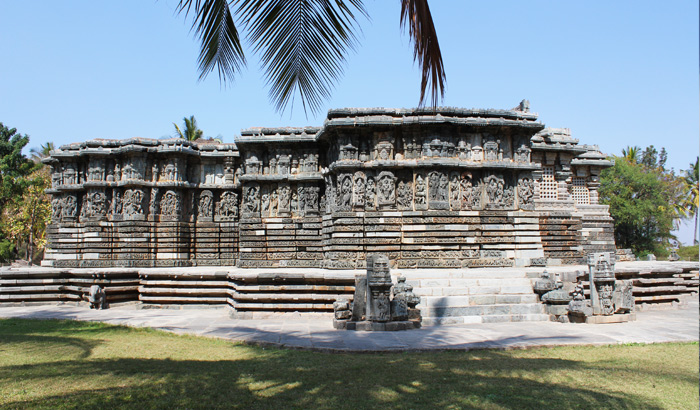Temples in Karnataka
Continuing on my journey from Halebidu, I had decided to visit Belur. Belur and Halebidu are often referred to as the twin marvels of the Hoysala Dynasty. People, like me, visit these two cities together. Belur was also once the capital city of the Hoysala Dynasty, because of which Belur, now has some enviable temples which spellbinding architectural styles.
Belur is also named as a UNESCO world heritage site and attracts a number of visitors throughout the year.
My journey to Belur started a day after I visited Halebidu. By then I had developed a keen interest in the Hoysala style of architecture and wanted to know more and more. Belur, being only 15km away from Halebidu was a no brainer.
I left after a nice breakfast and made my way to this fascinating town.
Chennakesava Temple
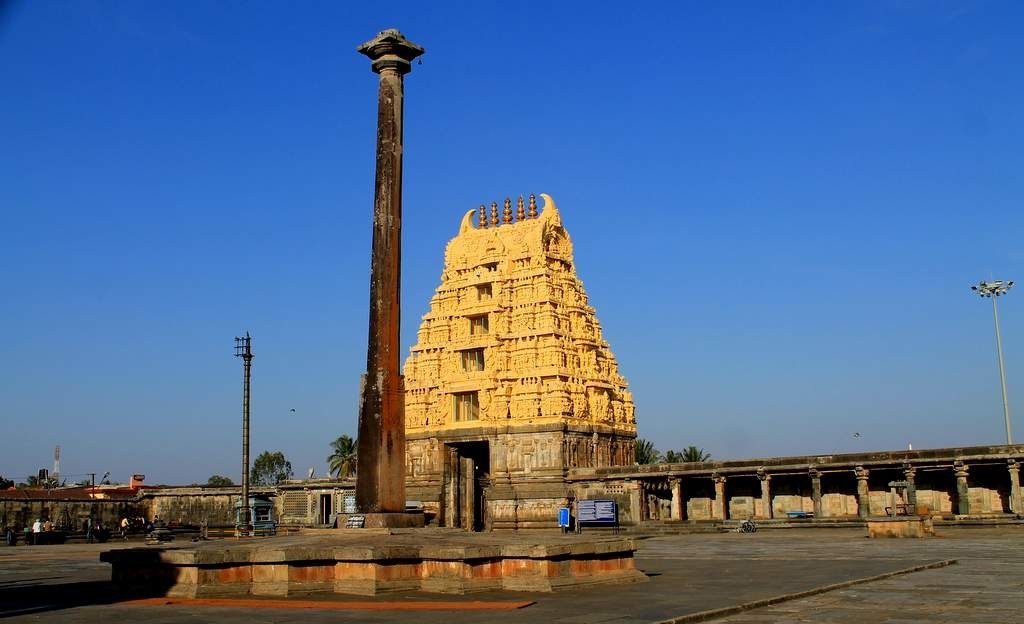
As my car halted at Belur, my eyes first went to this beautifully intricately built temple. Upon inquiring I came to know that this is one of the famous temples in Belur. Called the Chennakesava Temple, it is truly a testimony to the amazing creativity and architectural skills that these Dravidians had possessed. The stone sculptures seem to have a life on their own, and the sun rays make this temple look even more glamorous. As I neared the temple I stared in awe how every nook and corner of the outer walls of the temples were filled with some kind of a carving or sculpture. This was no blank space, every void was filled with an artistic marvel.
The temple is dedicated to Lord Vishnu- and the name itself literally translates to The Great Lord Vishnu.
I reached the temple and started exploring. There is so much to know and see in this temple that it is mind-boggling.
Pushkarni

This is actually the stepwell. Step wells are a pretty common addition to most of the yesteryear monuments to temples in India. They were used to preserve water at that time, and now they have become an architectural wonder which makes for great photographs.
This one is located right at the entrance, and it was the first thing that I saw. There are elephants carved on the side, and two shrines are also placed symmetrically to heighten the importance of this place.
Exteriors
The exterior of the main temple is what left me gobsmacked. The amount of detailing and work I saw was awe-inspiring. The walls were lined with depiction from Mahabharata, Ramayana, and animals. Each animal carving has its own symbolism. The elephants at the bottom represent strength, while the lions on top of that symbolise strength. The carvings are so well thought of and detailed that each of them weaves a story- a story of the amount of back-breaking work that is needed to make such artworks.
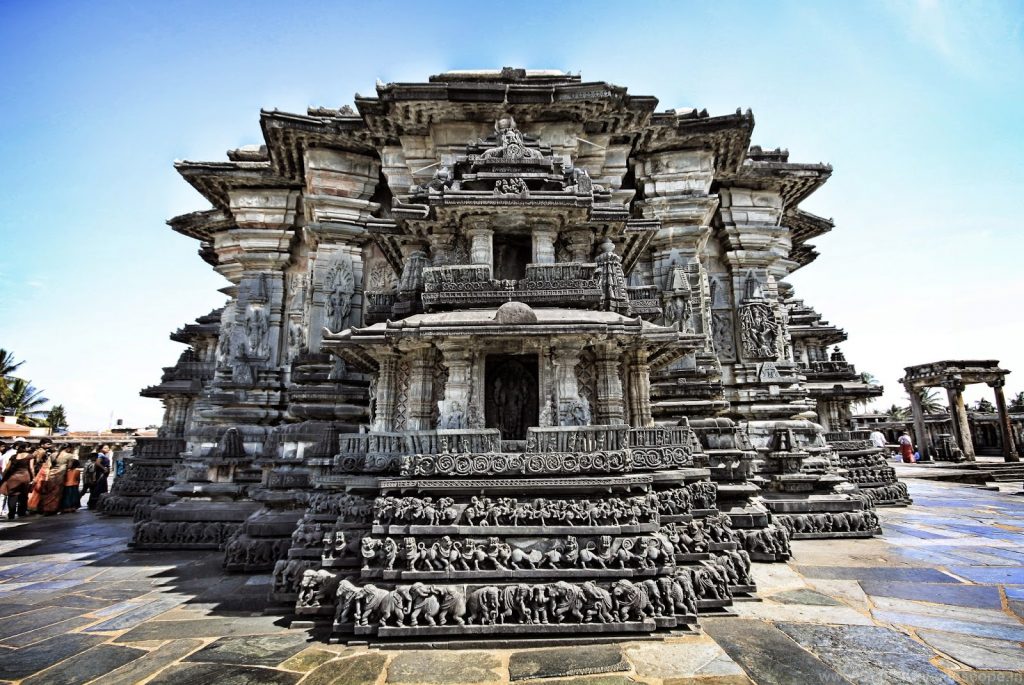
Art At The Entries
One thing that truly captured my heart, were the artworks that were carved atop every doorway if the shrines. The artworks are so elaborate and well made. They look like they will pop out of the art right now and come to life. Most of the artworks depict Lord Vishnu in different forms or engaged in different acts.
The Emblem
There are so many pieces of art in this place, that is very much possible to miss this sculpture. Yet, this one sculpture actually explains the heritage of the Hoysala Dynasty. The sculpture depicts a saint attacking a lion. This is a direct reference to the very origin of the name- Hoysala. Hoy means to strike and Sala refers to the name of the forefather of the dynasty who struck down a lion to save a saint. This sculpture is an embodiment of the very meaning of the word Hoysala.
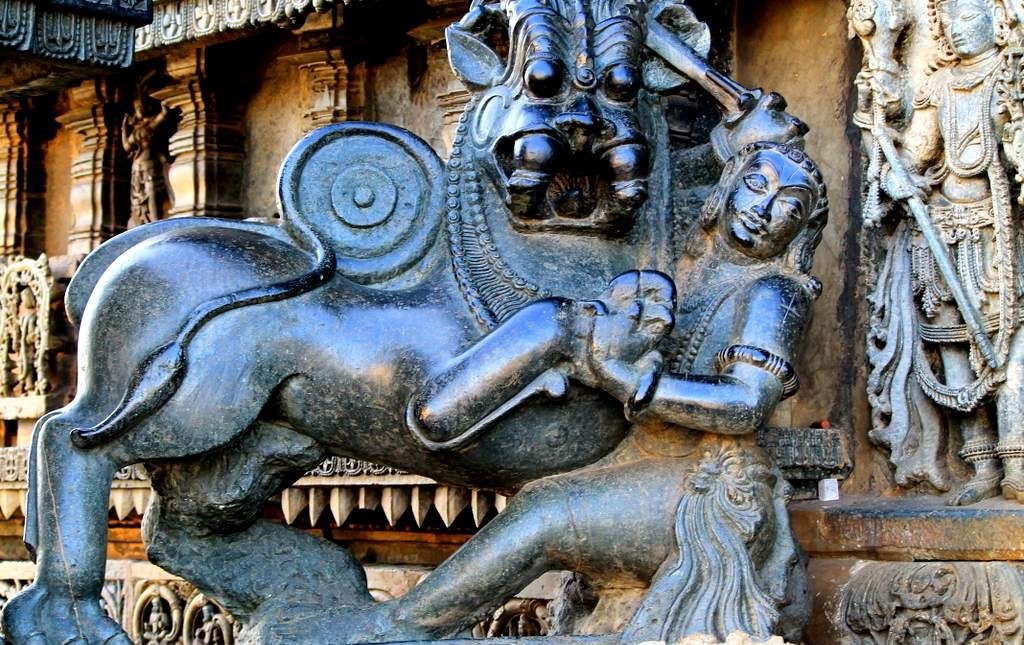
The ceilings
After exploring every nook and corner of the exterior of the temple, I wanted to go inside. In my mind, I wondered if the interiors will be able to match up to these stunning exteriors. I found my answers when I looked up at the ceiling and realised how beautiful this temple is inside out. The ceilings are intricately carved with depictions of Lord Vishnu among others, and add so much to the beauty of the temples. I was left gaping at the ceiling for longer than I should have.
Pillars
The inside of the temple is actually pretty dark. It is difficult to make your way through it. Yet, the one guiding factor is the pillars that have their own shine. These pillars are mind-blowing. No pillar is alike, and each pillar has different carvings on them. I was absolutely impressed by this. The shine of these pillars come from the metal that they are made of.
One of the most fascinating pillars is the Narasimha Pillar, which is so intricately carved. The artworks are marvellous and almost impossible to imagine the amount of work needed to make it this detailed and precise.
The temple itself is lined with several lovely statues of Vishnu and Mohini that only add to the allure. As I walked out of the temple and into the sunlight once again I looked behind and admired this work of art one more time. I don’t think I can get enough of it.
How To Reach Belur
You can come via Bangalore. Belur is about 222km from Bangalore and can easily be covered in 3 to 3.5 hours. The roads to Belur are pretty good, and you can find private vehicles and cabs to hire till Belur and back.
Hassan is the nearest railway station to Belur, and you can opt for that too. From Hassan, Belur is about 38 km away, and most of the taxis ply till Belur from Hassan railway station.
There are bus services also that can be availed to Belur from Bangalore, Hassan, Mangalore, and Mysore.
Travel Tips
- It is best to avoid summer months, as it gets too hot. It will be hard to actually grasp every detail of this place in the heat. Best time to travel is from October to April, as the weather is cool and comfortable.
- You can easily cover the place as a day trip from Bangalore, but if you want to stay overnight, then Hassan has some good options.
- Since this is a Hindu Temple, there are some guidelines that must be followed. This includes dress codes, footwear, and proper conduct is needed.
This temple is an ode to what the architects of the past who made such a colossal marvel possible in a time when technology was limited. Such an architectural marvel must be preserved and revered at the highest level. There are some priceless works of art that adorn this temple. I can only call myself lucky and honoured to have seen such a marvel in my life.

